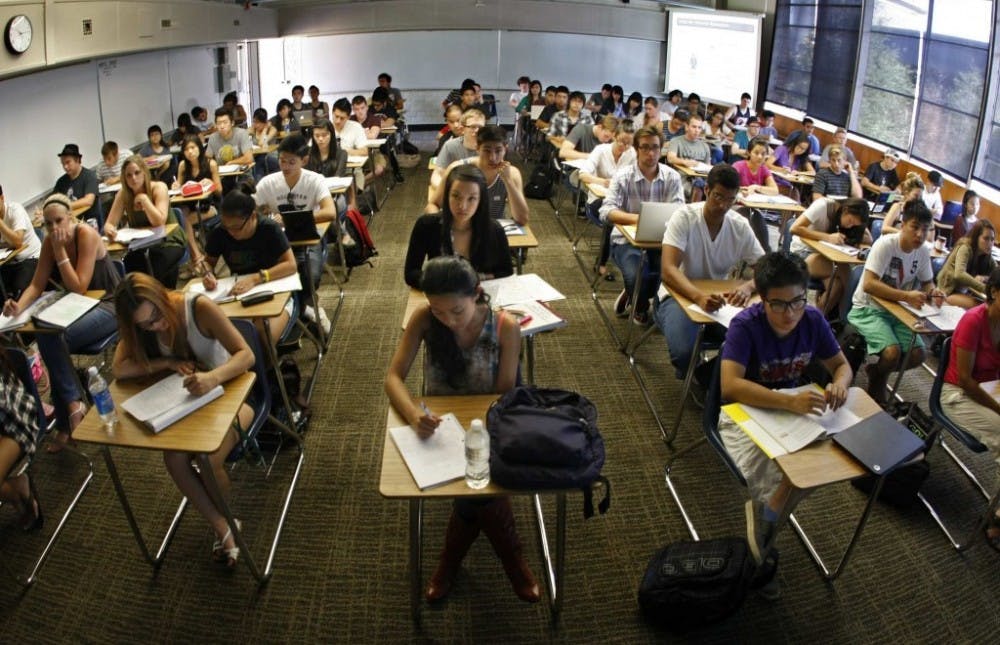In recent years, the backbone of the university course measuring metric, the credit hour, has come under increased scrutiny.
Originally created by Andrew Carnegie and once called a “Carnegie unit,” the credit hour was created as a way to ensure professors received proper pension, measuring the amount of time a teacher spent teaching and relating that to payment. The credit hour quickly evolved from its role in teacher pension to become the practical standard by which learning is measured.
But recently, the credit hours’ role in higher learning has been called in to question because of a disconnect between time spent in the classroom and actual knowledge attained while in class.
Nevertheless, at Elon University, credit hours are crucial in designing and carrying out the curriculum, according to Mark Albertson, university registrar and assistant to the provost.
“Most students take five or six classes a semester at other schools," Albertson said. "We went to a four-hour-credit system in 1994 because we thought to make classes longer so students in each class could go deeper and more in-depth with the material. “
Each request for a new course comes with a number of credit hours attached, which are derived from the amount of time spent in a classroom and the expected amount of time devoted to study and engagement outside of class.
In “Cracking the Credit Hour,” Amy Laitinen explained time spent in the classroom does not necessarily yield better learning within the classroom
Despite the assumption that more credit hours will equal an increased level of knowledge, ultimately setting up graduates for successful careers, trends have shown credit hours do not directly correlate with learning.
According to a 2006 study by the United States Department of Education's National Center for Education Statistics, 75 percent of graduating college students lack the basic skills necessary to do basic things such as summarize opposing newspaper arguments, and 31 percent of graduates indicated they can take away lessons from a complex story or perform computations.
But the credit system is instrumental in measuring students' academic progress.
“I am a firm believer in the credit-hour system," Albertson said.
In the mid 1990s, Elon switched from a system in which students enrolled in five 3-credit courses each semester, totaling 15 hours, to enrolling in four 4-hour courses, or 16 credit hours, in order to allow more face time with teachers and more time experiencing the classroom setting.
“When we made the switch, we extended class time 25 percent so that students could have more face time with teachers and other students,” Albertson said.
According to Laitinen, one of the biggest problems facing students, and a continually scrutinized element of credit hours, has to do with transfer credits and the unstandardized way in which universities deal with a supposedly formulaic set of credits.
“At Elon, most classes that are considered general college-level courses usually transfer," Albertson said. "Transfer credit is given on a course-by-course basis and must be within the same department and similar in nature. Additionally courses must have a grade of C- or better to be considered for transfer."
Albertson said even with all the shortcomings the credit hour system has, it remains in place because of its convenience with important administrative functions including scheduling, determining federal and state funding, comprehending workloads and distinguishing part-time and full-time students.
“The credit hour has a structure to it, if we don’t have some kind of structure it would not be an easy task to determine graduation requirements," he said. "Right now, the credit hour is the bar to measure graduation requirements and any sort of new system would have to deal with the task of determining what the new bar will be.”
Albertson said until a better alternative comes along, the credit hour system will remain in place as the measure by which school requirements are met and students are able to graduate.


